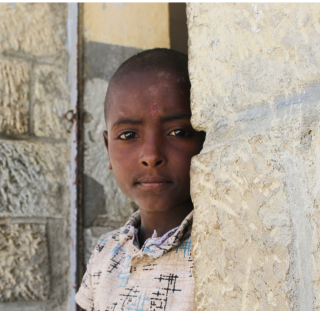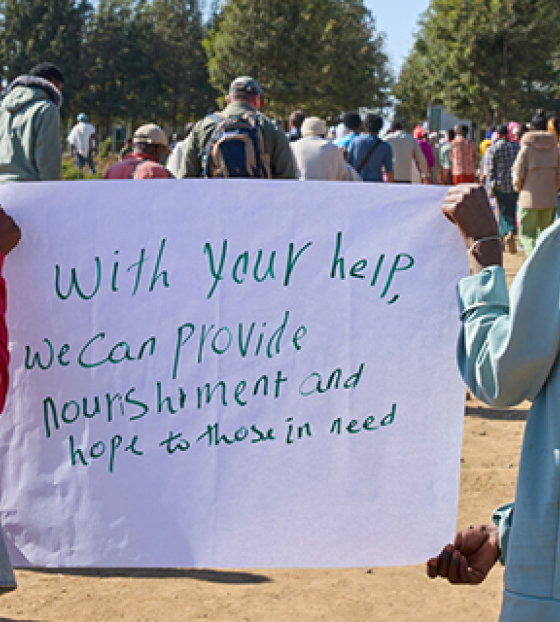

Why it’s still worth supporting Tigray
Ethiopia finds itself faced with a humanitarian crisis and predictions of famine, forty years after an estimated 1 million lives were lost to hunger in 1984/85. Why do the people of Tigray need our help?
In the northern region of Tigray – the centre of Ethiopia’s current, escalating hunger crisis – almost 400 lives, including those of 25 children, were lost to starvation in just one month according to local reports, and it’s estimated that 4.5 million people need emergency food aid.
But how, in just four decades, can a country that received a global outpouring of support and action on an unprecedented scale – including millions of pounds for famine relief – find itself once again on the brink of starvation? Why are families enduring emergency levels of hunger and food insecurity, and predictions of much worse to come if there isn’t urgent intervention? Is Ethiopia’s recurring hunger just an unsolvable problem?
Ethiopia’s boom (1990s-2020)
A lot changed in Ethiopia after the 1980s famine. By 1994, the development in the agricultural sector began to be recognised as a catalyst for economic transformation. And from the early 2000s (when the country had one of the highest poverty levels in the world), Ethiopia took extraordinary strides to become the fastest-growing economy in sub-Saharan Africa in 2018, growing its economy on average around 10% per year.
Driving this success was the investment in agricultural growth, spending on basic services such as education and healthcare, and effective support systems for rural communities. Ten to twenty years after the famine of the 80s that inspired Live Aid (between 1995 and 2015), poverty levels more than halved, as the percentage of Ethiopians living below the international poverty line fell from 69% to 27%. Rapid growth more than tripled the country’s average wage. Life expectancy also increased from 50 to 60 years in just over 10 years and the expected number of years children were spending in school had increased by four years.
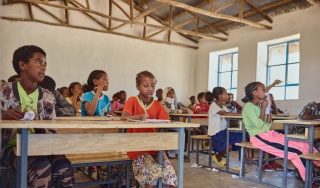
Despite the significant strides made – which largely resisted climate shocks, high inflation rates and the financial crash of 2008 – Ethiopia’s deep-rooted inequality persisted, particularly in rural areas where around 80% of the population reside. Low rates of school enrolment and access to sanitation, as well as challenges around investment in the health, safety, and education of women and girls continued to plague the most vulnerable households. Elizabeth, a colleague from our partner organisation that helps to deliver our school feeding programme in Tigray, describes the monumental efforts of Ethiopians to break free from poverty: “We sacrificed one generation to feed another. Our generation was built on hungry farmers who sacrificed to educate their children, to build universities. They built the hope for their children’s future.”
Tigray defies all odds to transform its landscape
The worst affected areas during the 1984/85 famine in Ethiopia were in the north of the country, namely the regions of Tigray and Wollo. Some years later, as the recovery process was well under way in Tigray, extraordinary things began happening there too.
Incredible efforts were made across the region to restore agricultural land and infrastructure impacted by the famine and the drought that preceded it. Decades of progress and worldwide recognition followed (from the 1990s to 2020), driven by forward-thinking government policies and measures including irrigation projects, soil conservation, and seed distribution programmes. In 2017, just three years before the region descended into civil war, Tigray’s local authorities were awarded the UN’s Future Policy Award (beating 26 other nominated policies) for their efforts to combat desertification and improve fertility of drylands. The region was described as “greener than it has ever been during the last 145 years” and the collective efforts of Tigray’s government and its people were praised as the perfect example of how “a small region in a climate vulnerable country can find a smart and highly effective way to successfully address a global challenge.”
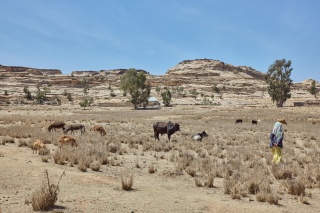
One of the major undertakings during this time was the conservation of 90 million tonnes of soil and rock by local communities over the course of 15 years. Experts say that Tigrayans “may have moved more earth and stone [in recent years] … than the Egyptians during thousands of years to build the pyramids”.
Years of hard-earned development destroyed
But everything changed in November 2020 as one of the 21st century’s bloodiest civil wars of destroyed decades of sacrifice, collective action, and progress. Two years of fighting between Tigray’s ruling party and forces allied to the Ethiopian federal government and Eritrea caused huge loss of life (deaths are believed to be in the region of 600,000), the destruction of essential services and infrastructure, widespread displacement and sexual violence, and led to devastating consequences for the region’s land and environment.
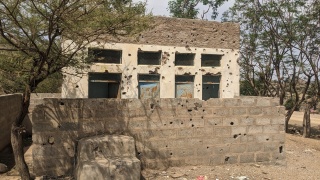
Movement of goods, namely food, in and out of the region was restricted, and there were countless reports of soldiers destroying farmland, killing livestock, looting farming equipment and using blockades to cease access to seeds and fertiliser. By August 2022, almost half of the region’s population were in “severe" need of food. And out of the reported 600,000 deaths, upper estimates show that more than 356,000 were caused by starvation.
Gidey Brehe is the Chairman of an IDP camp where around 6,000 households reside. He says: “Western Tigray used to be a hotspot of economic activities. It was self-sufficient. Nobody had to experience begging. They exported beyond Tigray and Ethiopia.
“Western Tigray was an especially wealthy part of Tigray. The earth was fertile, there was a lot of infrastructure that was good for trade. It was a land of opportunities. Now from there, they have to come here.”
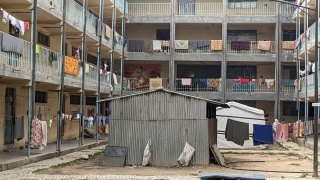
Still bearing the scars of the civil war, Tigray was then hit by drought. Fields that were already ravaged during the conflict are now starved of rainfall. Cattle – a vital source of food and income – that were saved during the civil war are now dying because of failed rains. Farmers have no supplies to sell, no food to eat, and virtually no hope of even growing any crops. In 2023, farmers and smallholders planted seeds in 663,619 hectares of land out of a planned 1,346,927 hectares. Around two-thirds of the already much-reduced harvest failed. The last significant rainfall to hit the region was recorded in autumn 2022.
Compounding this extremely fragile environment are the many wider challenges facing Eastern Africa including the recovery from Covid-19, and inflation and high food prices that are being exacerbated by the war in Ukraine.
Saving lives through school meals in Tigray
Mary’s Meals has been serving school meals to children in Tigray since 2017 and has significantly scaled up its operations in recent months in response to the quickly deteriorating situation and resulting hunger crisis in the region.
Over two decades, Mary’s Meals has witnessed the power of community run school feeding programmes in the complex fight against hunger, working alongside dedicated local people who are determined to overcome hunger. In Tigray, it’s a race against time to save the lives of children who are already malnourished and don’t have access to food at home.
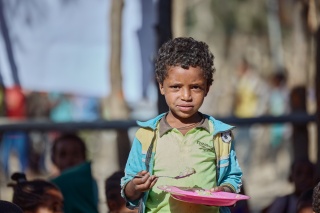
As we expand our school feeding programme in Tigray, not only will thousands more children benefit from consistent, nutritious meals that will help them to grow stronger, but their families and communities will be positively impacted as people come together to deliver the programme, and parents can rely on the fact their children will receive a meal every day they attend school. Communities that have long recognised the value of education will feel a new sense of hope knowing that their children have a chance to re-engage with learning, and that the daily meal will provide them with the energy to do so.
Dr Abraha, a paediatrician at Tigray’s biggest hospital – who is seeing three times as many cases of malnutrition as normal, and a five-times higher mortality rate – describes school meals as essential to the future. He says: “When I started school, I was the recipient of school meals. I think a school feeding programme is very important, the future depends on it.”
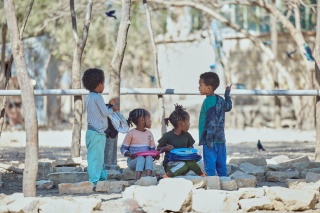
Why help?
With support, collective action, and helpful initiatives, Ethiopia recovered from disaster and famine before to become a shining example of development. It seems so unfair that such incredible progress was reversed in just a few years. But with the right support and action behind it, Ethiopia can rebuild itself again. Through our partner, we will work with communities to help lay the foundations for a better future. By ensuring children can come to school and have enough energy to learn, our collective action can help to pave the way for more exemplary development and innovation in Tigray.
